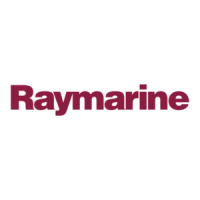Chapter 1: Overview 1-5
Heading and Position
Data
Heading and Position
Data
Heading and Position Data
Full functionality of the radar is achieved when it is part of an integrated
system with other equipment connected via SeaTalk or NMEA 0183. Data
from this equipment including position and heading is shown on the display
and is used in calculations.
Details on connecting other equipment are given in Chapter 6.
Providing Heading Data for MARPA
The performance of MARPA is dependent on the quality of your heading
sensor. It is important that both the heading sensor and the radar scanner
(bearing alignment) are correctly calibrated. Refer to the appropriate heading
sensor and radar scanner handbooks for calibration details. The better the
accuracy of your heading data, the better the performance of MARPA.
A gyro compass provides the best performance in all conditions. Alternatively
you could use a fluxgate compass with rate gyro stabilization.
MARPA requires heading data to be frequently updated (we recommend a
data output rate of greater than 8 Hz); heading data must therefore be provided
to the display on NMEA.
We recommend the Pathfinder Smart Heading System (which includes the
Gyro Plus 2 unit). Good results are also obtained with a Raymarine autopilot
system incorporating a 150G or 400G Course Computer with internal rate
gyro.
Other heading sensors connected on NMEA may provide satisfactory results
in reasonable sea states. However, in unsettled conditions a rate gyro compass
is advisable.
Contact Raymarine Customer Services or your authorized Raymarine dealer
for additional information. For specific configuration details with the
Raymarine course computer refer to Appendix C. If you are using a suitable
third party heading sensor, refer to its documentation for installation and
calibration details.

